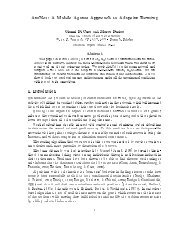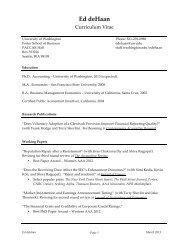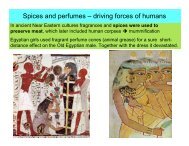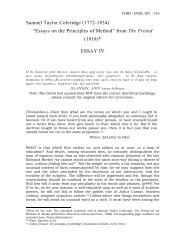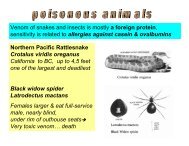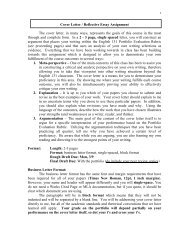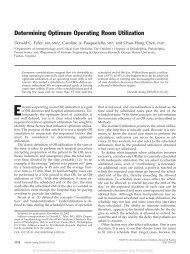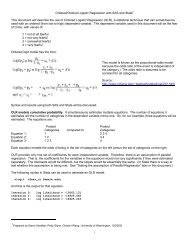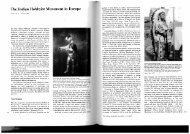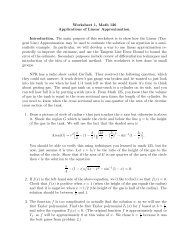The Lasting Presence of Gerard's Herball
The Lasting Presence of Gerard's Herball
The Lasting Presence of Gerard's Herball
Create successful ePaper yourself
Turn your PDF publications into a flip-book with our unique Google optimized e-Paper software.
and botanist, to undertake the project <strong>of</strong> updating Gerard’s <strong>Herball</strong>. R. T. Gunther (1922)<br />
credits one <strong>of</strong> the finest British botanists <strong>of</strong> the day, John Goodyer, with significant<br />
contribution to the effort. Goodyer “made the fullest use <strong>of</strong> the [1597] Herbal” and<br />
sometime between 1621 and 1622 he sent Johnson 27 pages <strong>of</strong> notes for inclusion in an<br />
updated edition. <strong>The</strong> first revision <strong>of</strong> Gerard’s work was published in 1633. (A second<br />
edition, unchanged, was published in 1636. I examined copies <strong>of</strong> both editions. I spent<br />
most <strong>of</strong> my time studying the 1636 edition and quote from it.)<br />
Historical claims that Johnson produced the revised edition by himself in a single year<br />
are probably exaggerated. More noteworthy is the collaboration between Johnson and<br />
Goodyer. <strong>The</strong> Hon. Mrs. Evelyn Cecil (1910) states, “It is refreshing to see the way in<br />
which [the] old herbalists wrote to each other, and helped one another. Johnson, even<br />
more than Gerard, worked in harmony with other botanists and physicians, and they went<br />
on expeditions together in search <strong>of</strong> rare flowers” (p.149). Johnson’s collaboration with<br />
Goodyer is an event highlighting the impetus for an improved herbal coming from the<br />
maturing science <strong>of</strong> botany.<br />
III. <strong>The</strong> <strong>Herball</strong> and botany<br />
<strong>The</strong> herbal tradition is closely tied to both the history <strong>of</strong> botany and the history <strong>of</strong><br />
medicine. As defined by Arber (1953), the study <strong>of</strong> plants since classical times has<br />
pursued two paths: the first, a path <strong>of</strong> inquiry aligned with natural philosophy and<br />
emphasizing plant form and structure; the second, a pragmatic path subservient to the<br />
needs <strong>of</strong> medicine and agriculture. <strong>The</strong> first path suffered in antiquity from a lack <strong>of</strong><br />
attention to the plant itself. <strong>The</strong> second path has been driven more or less by direct<br />
observation, since understanding the virtues and uses <strong>of</strong> plants requires experiment and<br />
5



